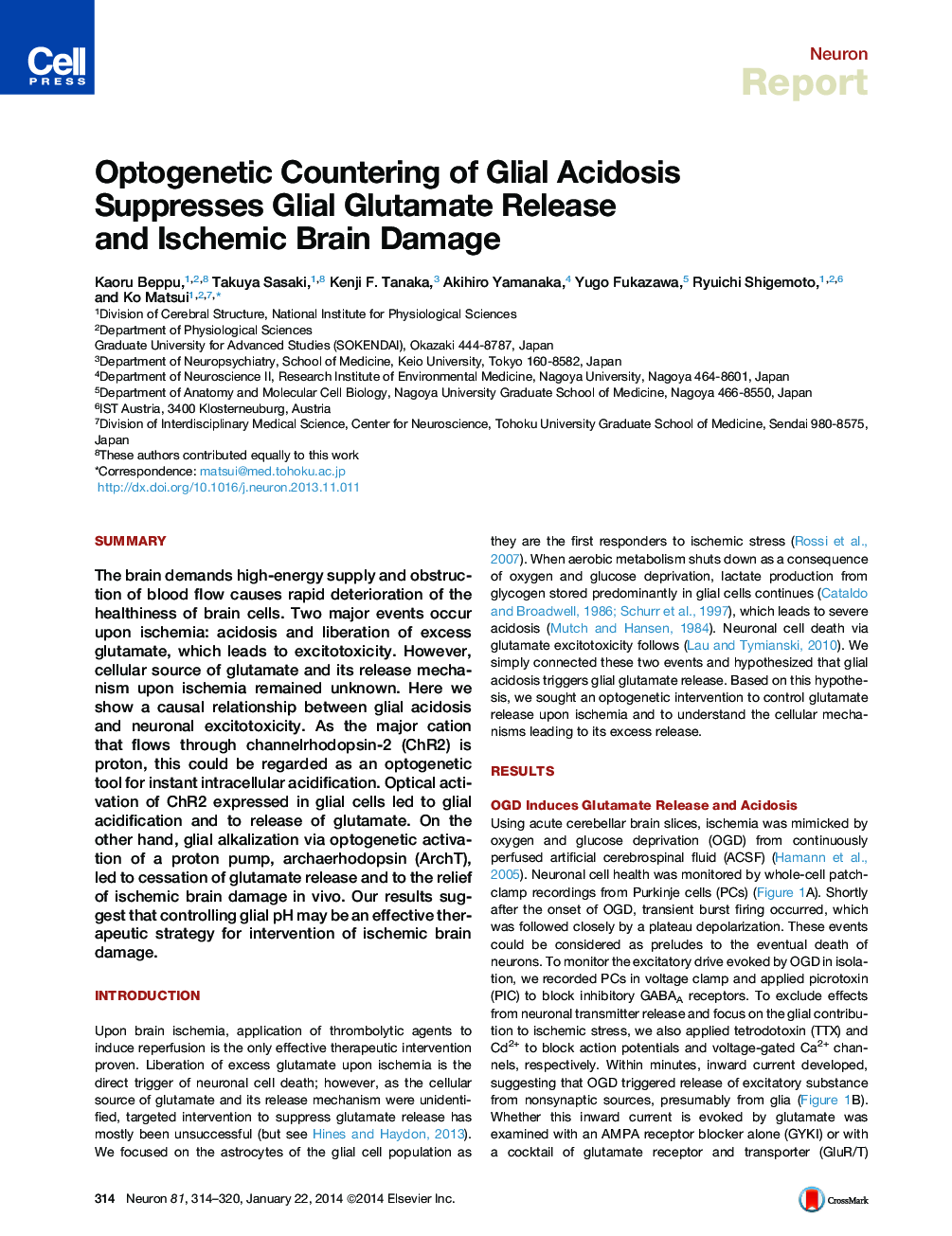| کد مقاله | کد نشریه | سال انتشار | مقاله انگلیسی | نسخه تمام متن |
|---|---|---|---|---|
| 4321196 | 1291583 | 2014 | 7 صفحه PDF | دانلود رایگان |

• Glial acidification is the key trigger of glutamate liberation upon brain ischemia
• Light-sensitive proton pump can alkalize glia and suppress glial glutamate release
• Optogenetic countering of glial acidosis relieves ischemic brain damage
• Controlling glial pH could become an effective therapeutic strategy
SummaryThe brain demands high-energy supply and obstruction of blood flow causes rapid deterioration of the healthiness of brain cells. Two major events occur upon ischemia: acidosis and liberation of excess glutamate, which leads to excitotoxicity. However, cellular source of glutamate and its release mechanism upon ischemia remained unknown. Here we show a causal relationship between glial acidosis and neuronal excitotoxicity. As the major cation that flows through channelrhodopsin-2 (ChR2) is proton, this could be regarded as an optogenetic tool for instant intracellular acidification. Optical activation of ChR2 expressed in glial cells led to glial acidification and to release of glutamate. On the other hand, glial alkalization via optogenetic activation of a proton pump, archaerhodopsin (ArchT), led to cessation of glutamate release and to the relief of ischemic brain damage in vivo. Our results suggest that controlling glial pH may be an effective therapeutic strategy for intervention of ischemic brain damage.
Journal: - Volume 81, Issue 2, 22 January 2014, Pages 314–320